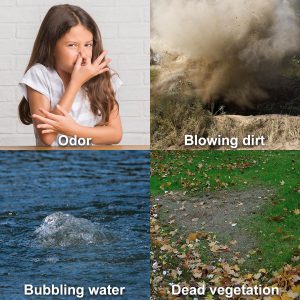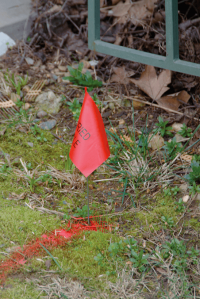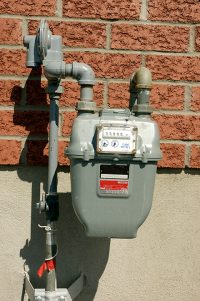Dig Safely
 Natural gas pipelines run under streets and sidewalks, and under yards and homes. If people dig into these pipelines, they can be damaged and natural gas can leak out. Even a small leak can cause a fire hazard.
Natural gas pipelines run under streets and sidewalks, and under yards and homes. If people dig into these pipelines, they can be damaged and natural gas can leak out. Even a small leak can cause a fire hazard.
 Your local utility locator service makes sure underground pipelines and other utilities are clearly marked so people can dig a safe distance away from them. If you know an adult who is planning a digging project, remind them to contact this service at 811 several business days before starting to dig.
Your local utility locator service makes sure underground pipelines and other utilities are clearly marked so people can dig a safe distance away from them. If you know an adult who is planning a digging project, remind them to contact this service at 811 several business days before starting to dig.
Recognizing Pipeline Leaks
 Leaks from natural gas pipelines are very rare. However, it is important to know how to recognize them in case one occurs in your community.
Leaks from natural gas pipelines are very rare. However, it is important to know how to recognize them in case one occurs in your community.
Natural gas utilities add a highly recognizable sulfur-like odor to natural gas to assist in leak detection. But don’t rely on your nose alone. Be alert for any of these gas leak warning signs:
- A sulfur-like or rotten-egg smell
- Dirt spraying or blowing into the air
- A hissing or roaring sound
- Continual bubbling in water
- Grass or plants dead or dying for no apparent reason.
What to Do
- Leave the area immediately and move to a safe location. Do NOT go back until safety officials say it is safe.
- Ask a trusted adult to call 911 and the local natural gas utility.
- Warn others to stay away.
- Unless you are a safe distance away, do not use fire or electricity—a spark from a match, phone, or electrical device (even a doorbell or radio) could ignite the gas.
What Are Those Flags?
 Have you ever wondered about small plastic flags or colored letters and symbols located on the side of a street? Utility workers use these to show the location of underground lines so people can dig a safe distance away from them.
Have you ever wondered about small plastic flags or colored letters and symbols located on the side of a street? Utility workers use these to show the location of underground lines so people can dig a safe distance away from them.
If you tamper with these flags and symbols, you put others at risk of contacting an underground line. Help protect your community by leaving them alone.
- Electric Power Lines
- Gas, Oil, or Steam
- Communication Lines, Cables, or Conduit
- Potable Water
- Reclaimed Water, Irrigation, and Slurry Lines
- Sewer and Drain Lines
- Temporary Survey Markings
- Proposed Excavation
Meter Safety
 Natural gas comes to your home from a service line and passes through a gas meter. The meter measures how much gas your home uses.
Natural gas comes to your home from a service line and passes through a gas meter. The meter measures how much gas your home uses.
Don’t tamper with or climb on gas meters. Don’t cover them with anything, or tie animals to their pipes—it could be dangerous.
The main gas shut-off valve is usually located by your gas meter. Make sure an adult knows where to find this valve and how to shut it off in case of a gas leak or major damage to your home.


